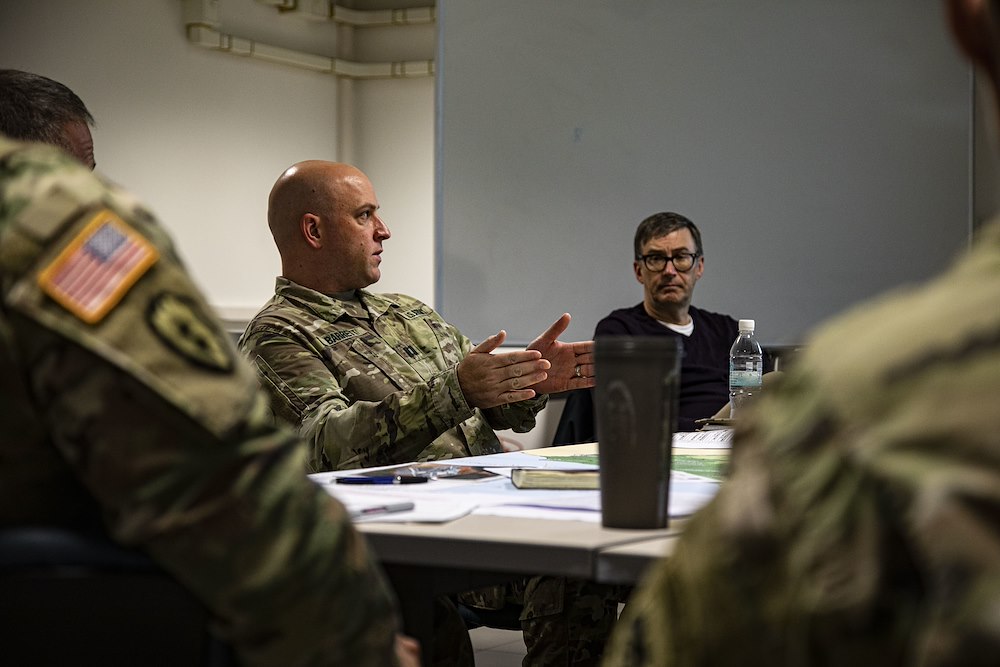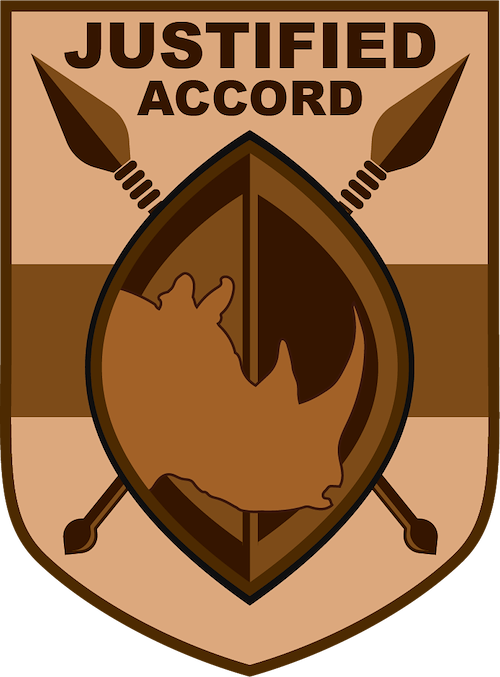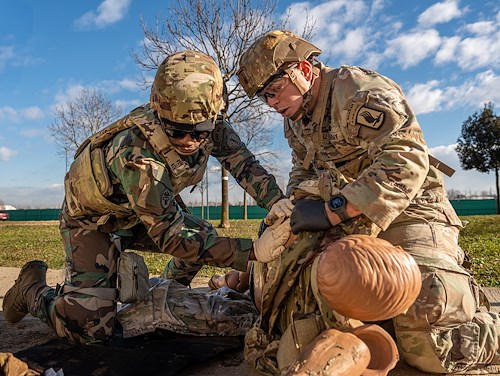Gallery contains 3 images
×
Photo 1 of 3
Leaders train during the African Gap Analysis Planning Exercise
U.S. Army Southern European Task Force leaders discuss options during the African Gap Analysis Planning Exercise (AGAPE), held in October at Caserma Ederle in Vicenza, Italy. The event examined how ongoing situations throughout the continent affect SETAF-AF's current and evolving distribution networks, while simultaneously validating innovative logistics concepts that increase the velocity of support and strategic freedom of maneuver. (U.S. Army photo by Staff Sgt. Amanda Fry)
Photo by: Staff Sgt. Amanda Fry
Photo 2 of 3
Leaders train during the African Gap Analysis Planning Exercise
U.S. Army Southern European Task Force operations analyst Maj. Kurt Findlay leads a training session during the African Gap Analysis Planning Exercise (AGAPE), held in October at Caserma Ederle in Vicenza, Italy. The event examined how ongoing situations throughout the continent affect SETAF-AF's current and evolving distribution networks, while simultaneously validating innovative logistics concepts that increase the velocity of support and strategic freedom of maneuver. (U.S. Army photo by Staff Sgt. Amanda Fry)
Photo by: Staff Sgt. Amanda Fry
Photo 3 of 3
Leaders train during the African Gap Analysis Planning Exercise
U.S. Army Southern European Task Force leaders discuss options during the African Gap Analysis Planning Exercise (AGAPE), held in October at Caserma Ederle in Vicenza, Italy. The event examined how ongoing situations throughout the continent affect SETAF-AF's current and evolving distribution networks, while simultaneously validating innovative logistics concepts that increase the velocity of support and strategic freedom of maneuver. (U.S. Army photo by Staff Sgt. Amanda Fry)
Photo by: Staff Sgt. Amanda Fry
VICENZA, Italy – Civilian and military leaders with the U.S. Army Southern European Task Force, Africa, met in October on Caserma Ederle in Vicenza, Italy, to conduct strategic training and discuss the roles and responsibilities for the organization.
The African Gap Analysis Planning Exercise (AGAPE) brought a selected group of sustainment planners together from throughout the Joint Logistics Enterprise to address the logistical role SETAF-AF serves in Africa.
The event examines how ongoing situations throughout the continent affect SETAF-AF's current and evolving distribution networks, while simultaneously validating innovative logistics concepts that increase the velocity of support and strategic freedom of maneuver.
Maj. Jonathan Kirkland, the SETAF-AF G4 chief of plans, said that AGAPE allows the organization to have a better say in establishing its role in the Army’s ongoing peacekeeping and partnership operations and its relationship both with U.S. Army Europe and Africa, and the 21st Theater Sustainment Command.
Kirkland said the event allows SETAF-AF to further establish its economy of force policies, which allow a maximization of resources within the organization.
“Economy of force is not doing more with less, it is utilizing a secondary area of operations in a way that has little-to-no impact on our primary force,” Kirkland said.
The event gave leadership from SETAF-AF and other organizations the opportunity to further establish SETAF-AF’s role on the African continent as it relates to crisis response and ongoing missions with partners throughout the continent.
Maj. Kurt Findlay, a SETAF-AF operations analyst and event instructor, said that the seminar-based war game format of the training exercise allows leaders to test economy of force concepts as they relate to sustainment operations on the African continent.
“Not all training and staff understanding comes through traditional means,” Findlay said. “This is a venue that takes many smart people from a variety of subject matter echelons and types together to solve a common problem and identify friction points now during training so that we can learn and establish those concepts or working groups for means so they don’t impact operations when they arise.”














